Heath Harmon’s second Kickoff Luncheon as the Alabama High School Athletic Association executive director was dominated by the same two topics as his first last summer.
Non-compliant transfers and NIL.
College sports has another before and afterdate. Before July 1, 2025 – this Tuesday – athletes could make money off their name, image and likeness (NIL) but not be paid directly by their schools. And after July 1, that has changed, making college sports look and feel even more like the pros. Some of the […]
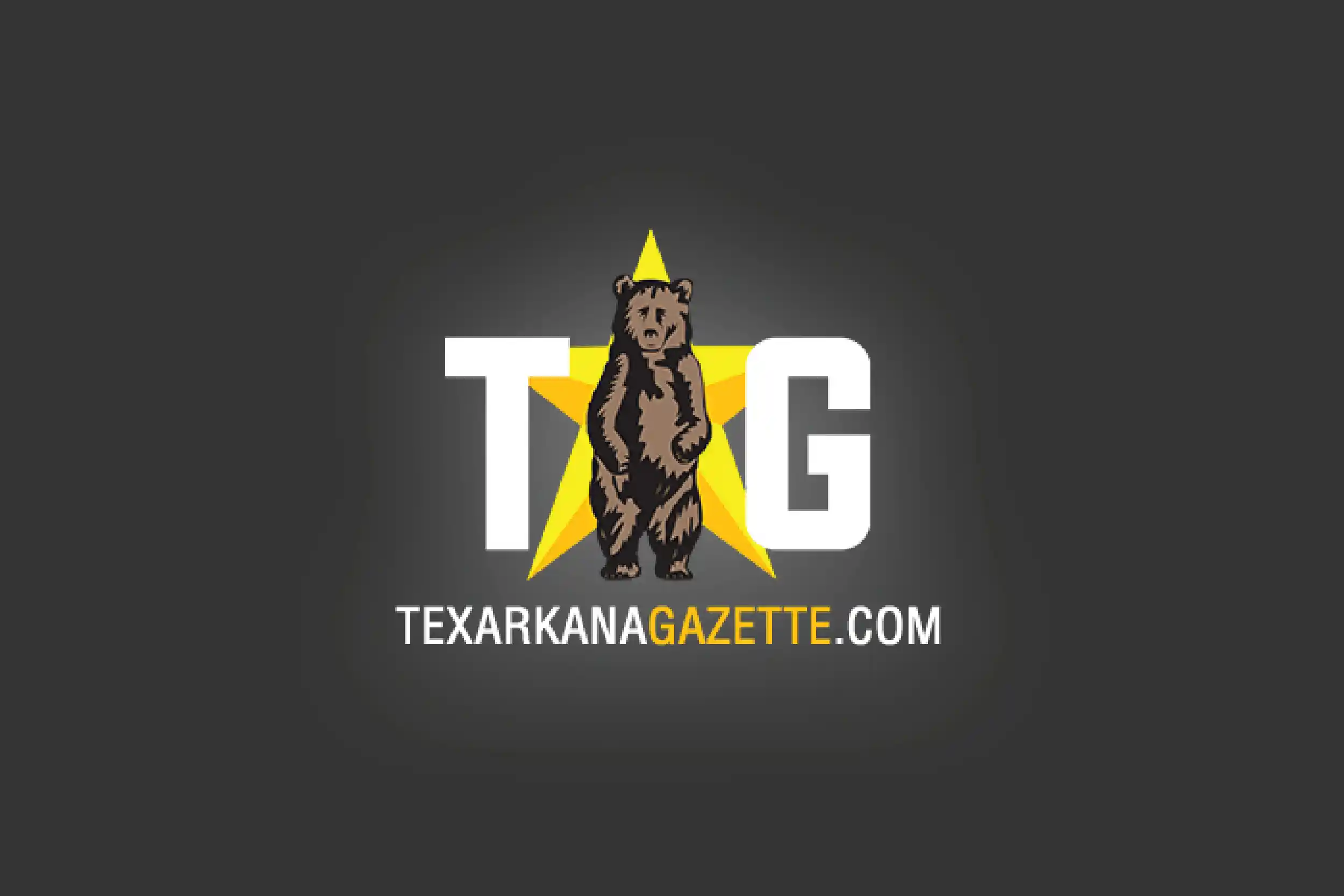
College sports has another before and afterdate.
Before July 1, 2025 – this Tuesday – athletes could make money off their name, image and likeness (NIL) but not be paid directly by their schools. And after July 1, that has changed, making college sports look and feel even more like the pros.
Some of the long-standing differences and caveats still apply. College athletes are not considered employees. Therefore, unlike athletes in the NFL, the NBA, the WNBA, the NHL and MLB, their pay and working conditions were not established through a collective bargaining process. But at least one major change will be familiar to any fan of those professional leagues.
College sports has a (soft) salary cap now. Let’s unpack.
HOW DID THIS COME ABOUT?
At the most practical level, the soft salary cap (or revenue sharing cap) is part of the massive legal settlement approved in early June. Commonly referred to as the House settlement, it consolidated three antitrust cases, all of them challenging past restrictions of college athlete compensation. And in that process, the defendants – the NCAA and the power conferences – agreed to allow schools to share revenue with (or pay) athletes directly for the first time. That officially started Tuesday.
Lawyers for the defendants and plaintiffs settled on an initial annual cap of $20.5 million per school. That is for athletes across sports, though a bulk of the money will go to salaries for football and men’s basketball players. Not every school will spend to the cap, though many power conference programs will. More than 300 Division I schools have opted into the new economic model, meaning they can pay athletes – up to that cap – but also have to abide by new roster limits in each sport. Schools that chose not to opt in are not allowed to pay athletes through revenue sharing. For now, this cap explainer is not relevant to them.
WHY $20.5 MILLION?
The starting cap was calculated by taking 22 percent of the average athletic revenue for power conference schools. In this case, the figures were from the 2023 and 2024 fiscal years. Importantly, only a specific set of revenue streams was considered, which has the attention of the plaintiffs’ attorneys for House. Each year, the settlement will require the NCAA to share the data used to calculate the cap with the plaintiffs’ attorneys. From there, the settlement permits the attorneys to “reasonably audit” the data – and this week, Steve Berman, one of the lead attorneys, told USA Today they are doing just that. In question is whether certain revenue streams were not counted and should be, which could increase the initial number.
Berman told USA Today that he is fine with going ahead with $20.5 million for 2025-26. But if the number were recalculated in an auditing process …
… THAT WOULD BE SIGNIFICANT. WHY?
Great question. Perfect time to ask.
The settlement is a 10-year agreement. The cap will rise and recalculate throughout that span. There will be a 4 percent bump before the second, third, fifth, sixth, eighth and ninth years. There will be a recalculation, using that same 22 percent formula, before the fourth, seventh and 10th years. So if the baseline changed because of an immediate audit of the $20.5 million figure, there could be a trickle-down (or trickle-up?) effect on the initial annual increases.
WHAT COUNTS AS SPENDING TOWARD THE CAP?
Three streams: revenue-sharing money paid to athletes, which will essentially function as salaries; scholarship spending above previous NCAA limits; and other education-related payments, known as Alston money.
Alston money can account for up to $2.5 million per year toward the cap. Same with scholarship spending, though that part is a bit trickier to explain. The settlement permits schools to pay an uncapped amount of scholarship money to a fixed number of athletes across sports. Or in other words: Previous limits on scholarship spending have been replaced by new roster limits, meaning more money distributed to fewer athletes. A football team, for example, can carry a maximum of 105 players and offer 105 full scholarships, if it so chooses. But as far as the $20.5 million cap is concerned, only scholarship money spent above previous NCAA limits – and only up to $2.5 million per year – will count toward it. Confused? Welcome to the life of a longtime college compliance staffer.
WHY HAVE YOU REPEATEDLY REFERRED TO THIS AS A SOFT CAP?
Another great question.
Until this point – before July 1, 2025 – boosters funded five-, six- and seven-figure salaries in football, men’s basketball and, to a lesser extent, women’s basketball and other sports. With rules established by the settlement, the NCAA and the power conferences hope to change that. Any NIL deal that exceeds $600 will have to go through a clearinghouse, which will trigger a review of who is paying and what services they will receive from the athlete, among other factors. The hope, for the leaders of college sports, is to eliminate situations in which an athlete receives $500,000 for a few social media posts.
At the highest levels of the biggest sports, those deals have fueled the NIL economy for the past four years. Donor groups, known as NIL collectives, typically have brokered them. Many legal experts are skeptical that the enforcement efforts would hold up against more antitrust suits.
And throughout the history of college sports, there’s at least one certainty: Motivated rich people will find a way to help their teams win. For that reason – that donors and NIL collectives will help schools spend above the $20.5 million barrier – it feels most responsible to call it a soft cap. The whole system could put at least some athlete payments back under the table, such as when they used to be delivered in McDonald’s bags before the NCAA changed its NIL rules in 2021.Plus, beyond donor money, schools and collectives can still help athletes land brand deals to enhance their income.
At the top of college football and basketball, spending from the revenue-sharing pool will be viewed as a baseline. It will, as ever, take a lot more money to thrive.
Long before he led his Northern Illinois Huskies to a shocking upset of Notre Dame, Thomas Hammock was a two-time All American running back for NIU running for over 1,000 yards in both his sophomore and junior seniors. When his playing career was cut short due to a heart condition, forcing him to step away […]

Long before he led his Northern Illinois Huskies to a shocking upset of Notre Dame, Thomas Hammock was a two-time All American running back for NIU running for over 1,000 yards in both his sophomore and junior seniors.
When his playing career was cut short due to a heart condition, forcing him to step away with a season of eligibility remaining, Hammock immediately got involved in coaching, starting as a graduate assistant at Wisconsin before going on to coach running backs at NIU and Minnesota and with the Badgers before a stint on John Harbaugh’s staff in the NFL.
In 2021, shortly after taking over at his alma mater, NIU was picked to finish last in the MAC and instead went out and won the league with a 9-5 mark. Over the next three seasons, Hammock has led the program to two bowl games and a pair of bowl wins.
Yesterday evening, at his weekly presser, Hammock was asked if he had thoughts on making the transfer portal “more fair” and his response has been making waves across social media. By January earlier this year, the Huskies had seen 19 players enter the portal.
“To be honest with you, I love the challenge. It don’t bother me one bit, because in life you are going to make decisions – sometimes it is going to work in your favor and sometimes it is not.”
“I told our guys earlier today, yeah we lost all these guys, but let’s see who plays. It’s all good when people put on Twitter, ‘All glory to God, I’m going in the transfer portal,’ but let’s see if they play. How many of those guys are going to play? Or travel? Or get snaps?”
“I was going to tweet something the other day…a picture of me, and say I enjoyed my college experience and I didn’t get one dime, but the lessons I learned was more valuable than any money you could ever pay me. And I appreciate that, because that is long term. People are losing sight of the fact that this is short term.”
“Don’t lose focus of the long term. Get your degree. Learn valuable lessons that are going to help you in the long term of your life. That is the whole purpose. This is a transition from being a kid to being a grown up, and I hope people don’t lose focus of that. Everyone is talking about everything else other than what is the most important thing about going to college, because if you’re going to college to go get a couple dollars, you might as well go get a job. [College football] is too hard than to do it to get a couple dollars.”
“Learn the lessons that you need to learn to be successful in life for the next 40 to 50 years of your life. That’s it. I would do it again for free. FOR FREE, because of the things I learned. That is why I am standing here today, because of what I learned in college. Not because of what someone gave me.”
“That is what I would tell people, and parents need to learn that lesson too. Stop trying to live through your kids. Teach them what they need to learn to be successful. That’s what I’m teaching my kids. Not about NIL or revenue sharing…I couldn’t care less. You need to learn things in college that prepare you in life to be a father, a husband, to work, and everything else.”
“Those are the most important things.”
Hear more of Hammocks comments being applauded across social media in the clip.
Brent Venables, Sam Pittman lead hot seat talk in 2025 Brent Venables, Sam Pittman and Mike Gundy lead the list of coaches under pressure in 2025. When the NCAA allowed college athletes to transfer once without the penalty of having to sit out a year, players were offered an opportunity to seek fresh starts elsewhere […]

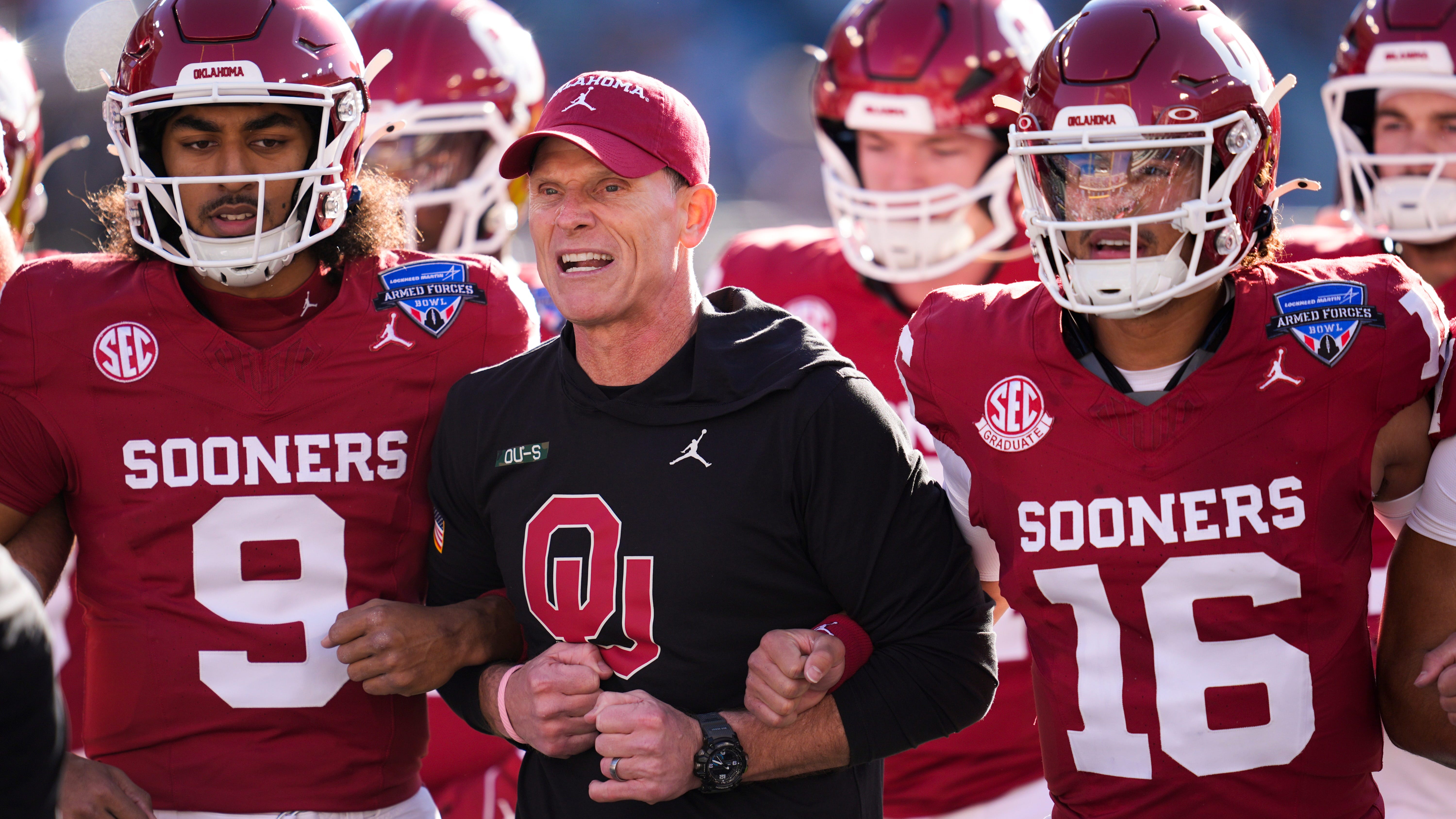
Brent Venables, Sam Pittman lead hot seat talk in 2025
Brent Venables, Sam Pittman and Mike Gundy lead the list of coaches under pressure in 2025.
When the NCAA allowed college athletes to transfer once without the penalty of having to sit out a year, players were offered an opportunity to seek fresh starts elsewhere while benefitting from the kind of unrestrained mobility coaches had enjoyed for decades.
One of the effects of that change, though, has been a widening gulf between college football’s haves and have nots, with programs from the sport’s biggest, most powerful conferences routinely plucking standouts from lower-level schools that don’t have the platform or financial resources to hold on to them.
It’s a reality that has caused frustration for many, particularly those outside of the Power Four conferences.
This week, one coach gave a loud, passionate voice to those feelings.
During a news conference on August 13, Northern Illinois coach Thomas Hammock said the ability to move from program to program has led to misplaced priorities from players and their parents, who he believes increasingly don’t value some of the non-monetary benefits that college can provide.
“I enjoyed my college experience,” Hammock said. “I didn’t get one dime. But the lessons I learned were more valuable than any money you could ever pay me. I appreciate that because that’s long term. People are losing the fact this is short term…Don’t lose focus of the long term. Get your degree and learn valuable lessons that are going to help you in the long term of your life. That’s the whole purpose. This is a transition from being a kid to a grown up. I hope people don’t lose focus of that.
“Everyone’s talking about everything else besides the most important thing of going to college. Because if you’re going to college to get a couple of dollars, you might as well go get a job. This is too hard to go get a couple of dollars. Learn the lessons that you need to learn to be successful in life for the next 40 or 50 years of your life. I would do it again for free because of the things I learned. That’s why I’m standing here today, because of what I learned in college. Not because of how much someone gave me.”
Hammock is entering his seventh season as the head coach at Northern Illinois, where he was a two-time academic All-American as a running back in the early 2000s. His Huskies teams have made bowl games in three of the past four seasons, including last season, when they went 8-5 and earned a stunning road win against eventual national runner-up Notre Dame.
That team was raided in the offseason, losing its starting quarterback, top three pass-catchers and many of its top defensive players to the portal, where many of them ended up at Power Four schools.
While Hammock said he loves the challenge of rebuilding a roster — his longer answer had come in response to a question about making the portal “more fair” — he wonders if the greener pastures players seek end up being any better than the places they just left.
“In life, you’re going to make decisions,” Hammock said. “Sometimes, it’s going to work in your favor. Sometimes, it’s not. I told our team the other day, we lost all these guys. Let’s see who plays. It’s all good when people put on Twitter ‘All glory to God, I’m going in the transfer portal.’ Let’s see if they play. How many of them guys are going to play or travel or get snaps?”
Hammock also believes some of the onus for portal decisions falls on the parents of players.
“Parents, they need to learn that lesson, too,” he said. “Stop trying to live through your kids. Teach your kids the things they need to learn to be successful. That’s what I’m telling my kids. I don’t care about no NIL or revenue sharing. I could care less. You need to learn things in college to get you prepared for life, to be a father, a husband, to work, everything else. Those are the most important things. That’s what people are missing.”
It is more important than ever for college athletes to develop a strategy that enables them to make use of their name, image and likeness amid the rapidly evolving framework for college sports. With the fourth anniversary of NCAA rules permitting college athletes to make money from the commercial use of their NIL just behind […]
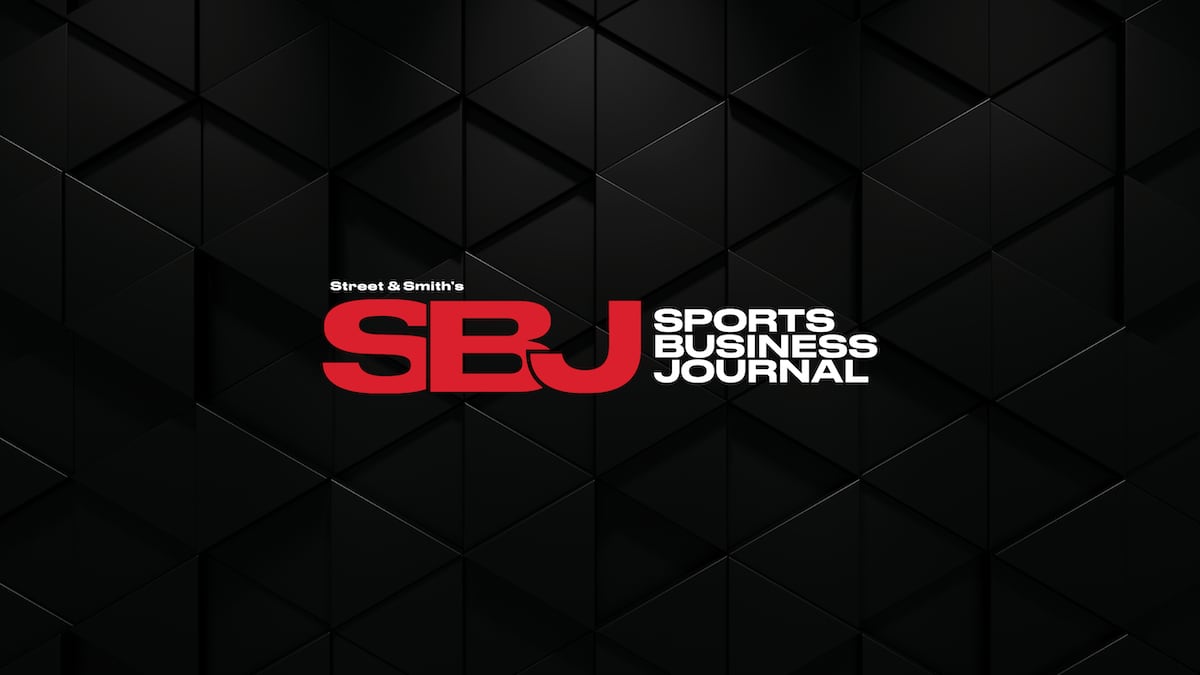
It is more important than ever for college athletes to develop a strategy that enables them to make use of their name, image and likeness amid the rapidly evolving framework for college sports. With the fourth anniversary of NCAA rules permitting college athletes to make money from the commercial use of their NIL just behind us, the newly approved House v. NCAA settlement, state legislation and proposed federal legislation continue to change the field. Here are four important guidelines for athletes interested in making the most of a rich landscape.
The NIL era opened the floodgates for college athletes, with a rush of businesses and brands seeking to partner with college athletes to reach their target audiences and consumers. Though the first few years have been described as “chaotic” or “unstable,” constant change in the marketplace means financial opportunity for college athletes willing to embrace it.
With College Football Playoff Championships often clearing 25 million viewers, and this year’s men’s March Madness championship topping 18 million, partnering with athletes is a no-brainer for brands of all sizes. Opportunities for athletes (especially those with social media followings) to partner with brands and businesses continue to grow. According to a SponsorUnited report, the last school year saw more than 3,000 branding deals for athletes with more than 1,700 brands.
We were encouraged to learn in a recent visit to a top-tier college athletic program that some schools are building dedicated internal staffing and resources to help their athletes source and fulfill branding deals. Athletes who are supported and encouraged by their programs to build their own personal brands, when they’re well advised with respect to properly monetizing NIL revenue stream, are less likely to enter the transfer portal solely in pursuit of increased economic opportunity. This financial benefit to individual athletes provides structure and the opportunity to better develop programs over multiple seasons, rather than risking the disruption caused by annual transfers.
NIL deals are great for exploring personal interests, pursuing passions and furthering self-expression, and industry leaders traditionally reserve substantial resources on their balance sheets and budget plans for branding and sponsorship deals. If an athlete loves video games, it’s a roughly $200 billion global industry; in the last year alone, there have been notable college athlete partnerships to support Activision’s Call of Duty, Epic Games’ Fortnite and of course, EA Sports College Football 26.
Athletes and their schools should think broadly about what is important to them in developing their personal brands and how those brands might complement their athletic and professional aspirations. Many athletes prioritize community and ethics in their NIL deals, leveraging their position to give back to social causes. For example, Simone Biles walked away from a lucrative deal with a major brand to pursue an opportunity with Athleta that focused on uplifting and celebrating women athletes.
Because this is still a new playing field, brands are still learning how to properly leverage partnerships with college athletes. Local businesses that may not have traditionally marketed through endorsements are participating for the first time in massive numbers because of the intense regional fandom that college athletics inspires. This is an opportunity to help these businesses dip their toes into the space and set up college athletes, more broadly, for longer-term participation in this evolving new world.
Athletes should remember to think long term. There are benefits to networking and learning tools to use for the future, or even an eventual transition to a career on the business side of sports. Branding partnerships could open the door to future job opportunities, personal development, and business building. This can be especially important for college athletes unlikely to play professionally after school.
Any good lawyer knows that the first offer for a branding deal is not the best offer. Athletes should not necessarily settle for the first proposal put in front of them.
And they should not negotiate in a vacuum. Athletes should be encouraged to talk to professional representatives about market rates for similar deals. They can also research other celebrities who work with a brand to see if there is any information on what they earn, or other ideas for what they want from a partnership. Coming to the table with statistics about the program’s media reach and viewer figures can help sell partnerships. Precedent is important, too — initial deals set the stage for the next one, and the price should be higher next season.
Further, “knowing your worth” isn’t just about a dollar figure. The quantity of social posts is a key deal point. It is not to an athlete’s advantage to flood social media pages with excessive posting — it dilutes the poster’s brand and makes people tune them out.
Exclusivity is extremely important — any exclusivity agreement should be thoughtfully time-capped and limited to the product’s exact narrow category. For example, exclusivity for “athletic outerwear, excluding footwear and headwear” leaves open much more opportunity for other partnerships versus a deal that is exclusive for “clothing.”
Athletes should not do it alone; they should engage competent, experienced and skilled advisers. Athletes who are not properly represented may be at a serious disadvantage, because they will not know the fair market value of their deals, what to ask for on other deal terms and other strategic considerations. As discussed above, these deals are not just about the dollar amount — exclusivity considerations, and the broader career strategy, can sometimes be even more important.
An experienced sports and entertainment attorney can help with all of the issues discussed here. Experienced counsel knows the industries at play — branding, entertaining, acting, modeling, entrepreneurship, investing, negotiating — inside and out. They can handle the business while college athletes focus on their already-full plate of school and sports and are essential to help athletes meet their full potential, in college exploring NIL, and beyond.
Binta Niambi Brown and John Meller are partners and Jacob Barroway is an associate at Manatt, Phelps & Phillips, LLP.
When the NCAA allowed college athletes to transfer once without the penalty of having to sit out a year, players were offered an opportunity to seek fresh starts elsewhere while benefitting from the kind of unrestrained mobility coaches had enjoyed for decades. One of the effects of that change, though, has been a widening gulf […]

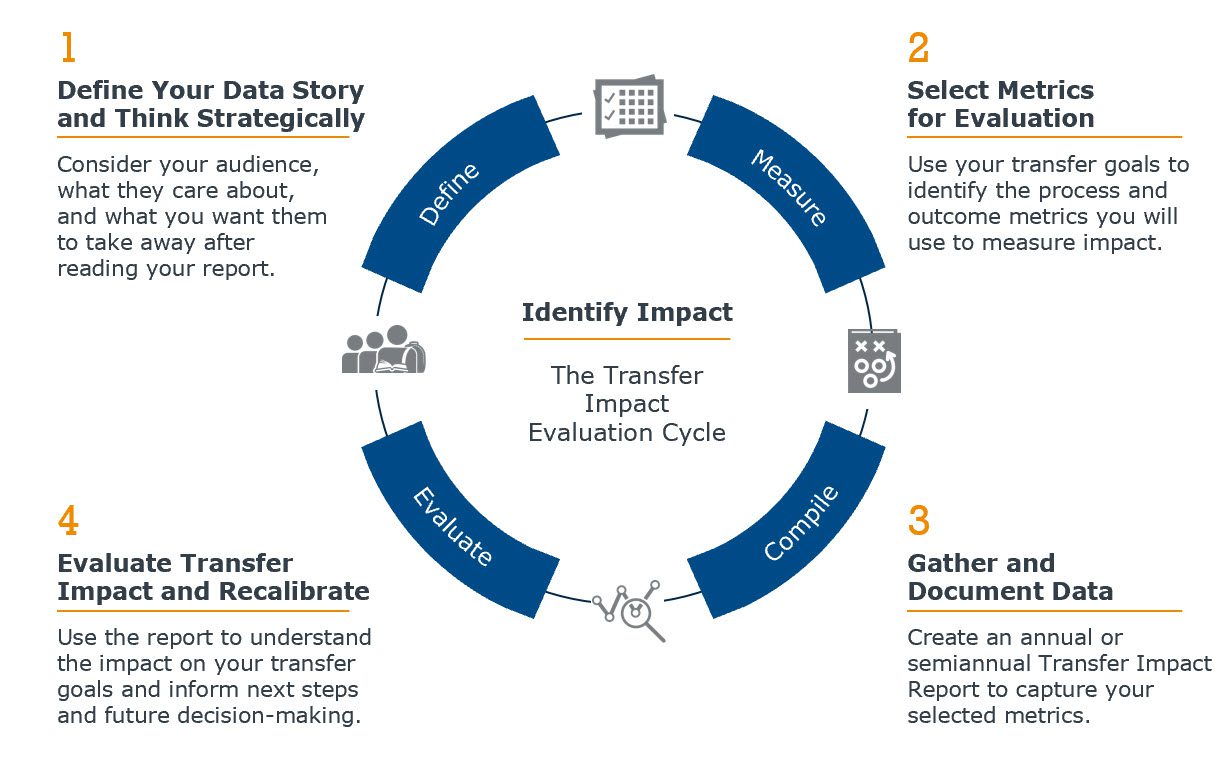

When the NCAA allowed college athletes to transfer once without the penalty of having to sit out a year, players were offered an opportunity to seek fresh starts elsewhere while benefitting from the kind of unrestrained mobility coaches had enjoyed for decades.
One of the effects of that change, though, has been a widening gulf between college football’s haves and have nots, with programs from the sport’s biggest, most powerful conferences routinely plucking standouts from lower-level schools that don’t have the platform or financial resources to hold on to them.
It’s a reality that has caused frustration for many, particularly those outside of the Power Four conferences.
This week, one coach gave a loud, passionate voice to those feelings.
During a news conference on August 13, Northern Illinois coach Thomas Hammock said the ability to move from program to program has led to misplaced priorities from players and their parents, who he believes increasingly don’t value some of the non-monetary benefits that college can provide.
“I enjoyed my college experience,” Hammock said. “I didn’t get one dime. But the lessons I learned were more valuable than any money you could ever pay me. I appreciate that because that’s long term. People are losing the fact this is short term…Don’t lose focus of the long term. Get your degree and learn valuable lessons that are going to help you in the long term of your life. That’s the whole purpose. This is a transition from being a kid to a grown up. I hope people don’t lose focus of that.
“Everyone’s talking about everything else besides the most important thing of going to college. Because if you’re going to college to get a couple of dollars, you might as well go get a job. This is too hard to go get a couple of dollars. Learn the lessons that you need to learn to be successful in life for the next 40 or 50 years of your life. I would do it again for free because of the things I learned. That’s why I’m standing here today, because of what I learned in college. Not because of how much someone gave me.”
Hammock is entering his seventh season as the head coach at Northern Illinois, where he was a two-time academic All-American as a running back in the early 2000s. His Huskies teams have made bowl games in three of the past four seasons, including last season, when they went 8-5 and earned a stunning road win against eventual national runner-up Notre Dame.
That team was raided in the offseason, losing its starting quarterback, top three pass-catchers and many of its top defensive players to the portal, where many of them ended up at Power Four schools.
While Hammock said he loves the challenge of rebuilding a roster — his longer answer had come in response to a question about making the portal “more fair” — he wonders if the greener pastures players seek end up being any better than the places they just left.
“In life, you’re going to make decisions,” Hammock said. “Sometimes, it’s going to work in your favor. Sometimes, it’s not. I told our team the other day, we lost all these guys. Let’s see who plays. It’s all good when people put on Twitter ‘All glory to God, I’m going in the transfer portal.’ Let’s see if they play. How many of them guys are going to play or travel or get snaps?”
Hammock also believes some of the onus for portal decisions falls on the parents of players.
“Parents, they need to learn that lesson, too,” he said. “Stop trying to live through your kids. Teach your kids the things they need to learn to be successful. That’s what I’m telling my kids. I don’t care about no NIL or revenue sharing. I could care less. You need to learn things in college to get you prepared for life, to be a father, a husband, to work, everything else. Those are the most important things. That’s what people are missing.”
AHSAA executive director Heath Harmon addresses members of the media at the Kickoff Luncheon on Thursday, Aug. 14, 2025. (AHSAA staff)AHSAA photo Heath Harmon’s second Kickoff Luncheon as the Alabama High School Athletic Association executive director was dominated by the same two topics as his first last summer. Non-compliant transfers and NIL. If you purchase […]

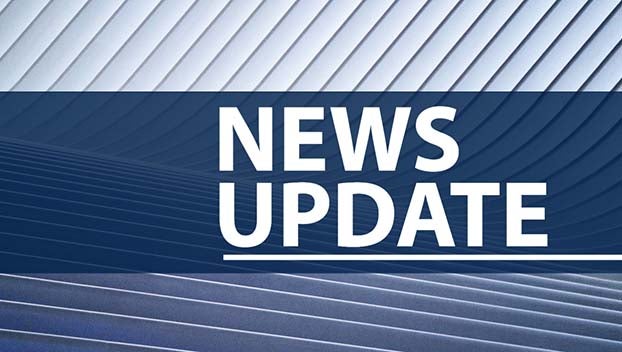

Heath Harmon’s second Kickoff Luncheon as the Alabama High School Athletic Association executive director was dominated by the same two topics as his first last summer.
Non-compliant transfers and NIL.
If you purchase a product or register for an account through a link on our site, we may receive compensation. By using this site, you consent to our User Agreement and agree that your clicks, interactions, and personal information may be collected, recorded, and/or stored by us and social media and other third-party partners in accordance with our Privacy Policy.
Earlier this summer, the NCAA Division I Council approved an increase from 31 to 32 regular season games in college basketball beginning with the 2026-27 season. Kentucky coach Mark Pope doesn’t think it’s nearly enough. “I would love to get to 40,” Pope told CBS Sports on Thursday’s Eye on College Basketball podcast. The second-year […]
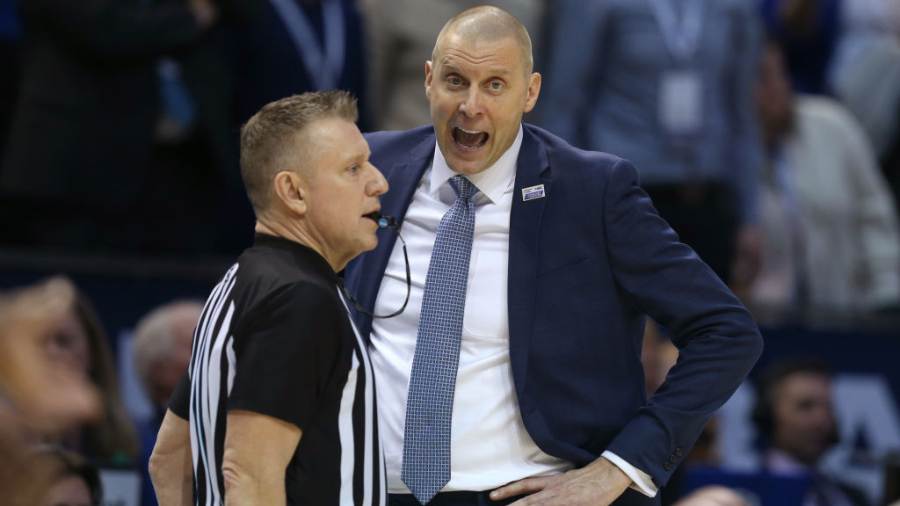


Earlier this summer, the NCAA Division I Council approved an increase from 31 to 32 regular season games in college basketball beginning with the 2026-27 season.
Kentucky coach Mark Pope doesn’t think it’s nearly enough.
“I would love to get to 40,” Pope told CBS Sports on Thursday’s Eye on College Basketball podcast.
The second-year Kentucky coach has a variety of reasons why he thinks college basketball’s regular season should inflate by as many as eight games, which would also logistically require bumping up the start of the season to mid-October.
“One, our guys do better academically during the season than they do out of the season,” Pope said. “Two, when our guys go on to the NBA, they’ve played a 31-game season. This was my experience: When I got to the All-Star break my first year in the league, I felt like I’d played two seasons already and I still had 60 games left to play, so I’m not sure it’s a great prep for the NBA.”
Pope also cited college basketball’s especially high rate of replacement on rosters due to the portal as a reason to increase game inventory, in addition to the obvious carrot: more games is more money to pay players in this new era of revenue sharing.
“Our teams turn over so much — because of the current environment, which I’m all in for it, it’s all great — but to give our teams a chance to go through a couple evolutions in one season that they used to go through, they used to have one or two or three seasons to get through those evolutions of growth,” he said. “Now we’re trying to squeeze in one season, we could use some more games. And our fans get to know these kids more. Every single game last year, our fans, BBN, got to know our guys so much better. Our fans deserve it. And when you’re tying all this to revenue share, there’s nobody’s that’s going to complain — players, coaches, fans — about getting to 40 games where everyone capitalizes off the revenue-share model.”
Pope is right that the desire to get more money via ticket revenue and home-gate proceeds will lead to more games in college sports. The increase to 32 starting next year is only the beginning. I’m not sure we’ll get 40 in this generation, but I think a 34- or 35-game schedule in college basketball will be reality by the turn of the decade.
Everyone invested in college sports has an opinion on the transfer portal. I asked Pope how he’d tweak that part of the calendar. He spoke from the heart, citing how last season’s Sweet 16 run was slightly dampened by the fact the portal came open the Monday after the first weekend of March Madness, bringing a little unwanted noise to his first tour as UK’s coach.
Pope said, if the choice were his, he’d move the opening of the portal to the Tuesday after the national title game — and drastically reduce the number of days players can opt into the portal. It’s currently a 30-day span. Pope wants to lop off 25 days.
“If I could change it, I would probably move it to the day after the national championship game and make it a really tight window, make it a five-day window,” he said. “That way, everyone’s had time to evaluate, everyone’s had time to see, and just make it a shorter window so we could get through the process. The process is already crazy-fast. But I say that also acknowledging that that answer raises a lot of issues, too. There’s no perfect answer. The main thing should still be the main thing, and the main thing is giving these kids an unfettered opportunity to go be a champion, and I still believe that’s where these kids get the greatest experience of their life that they’ll never forget, is pursuing a championship with their whole hearts.”
In 2024, the portal opened the Monday after Selection Sunday, which prompted widespread backlash. This year, it was pushed to the Monday after the first weekend of the NCAA Tournament and that still wasn’t good enough for many in the sport. Discussions are ongoing about what to do. Most coaches I’ve spoken to prefer the portal to wait until the Monday after the Elite Eight at the earliest.
Still, don’t take Pope’s musings as complaints. He’s as boisterous as any high-major coach you’ll find.
“To be a coach in college basketball right now, and have the opportunity to navigate this insanity, is actually the coolest thing ever,” Pope said. “It’s incredibly challenging. I don’t think there’s ever been a better time to be a coach.”
You can watch Pope’s hour-plus sit-down on the Eye on College Basketball podcast in full below, and be sure to subscribe to the channel.
As for the 2025-26 Wildcats, Pope talked about every player on Thursday’s pod appearance, too. Kentucky was a hit in his first season, beating eight teams in the top 15 of the AP rankings, tying an NCAA record. UK went 24-12 and got a 3-seed after grinding through the toughest conference in history. But gone are Jaxson Robinson, Koby Brea, Lamont Butler, Amari Williams, Andrew Carr, Ansley Almonor, Kerr Kriisa and Travis Perry. With them, more than 65 points per game of production also departs. Kentucky had a top-10 offense last season. Here’s the group that will try to match such firepower, with some insight from Pope on every player.
The floor general for this year’s Kentucky squad is a transfer from Pitt who averaged 16.8 points and should flourish in a new system. He’s the team’s best talker, consistently holds his teammates accountable and is ready to step into a tier of the most impactful all-around point guards in college hoops. Vital to UK’s quest to repeat last year’s success. Pope: “We think he’s going to take a massive jump. He’s been special for us.”
A likely preseason All-American, Oweh wasn’t even a projected top-seven minutes guy on Kentucky a year ago. Then he became the team’s leading scorer (16.2 ppg) and thoroughly investigated the NBA Draft process before coming back to Lexington. He’ll be much improved on defense and is expected to see a good uptick in his 3-point rate.
Pope: “I think he has a chance to be the top defensive player in the country, the most versatile.”
He’d have been a starter at Florida … but might wind up as a starter at Kentucky anyway. Aberdeen commanded a pretty penny in the portal after putting up 7.7 points for the national champs. Now he’s a laser-focused veteran who wants to capitalize on another roster with gobs of talent.
Pope: “Winner, winner, winner, winner.”
A high-profile, intra-SEC transfer. Kentucky plucked Diabate away from Alabama and in the process made sure that its defense will be improved in 2026-27. The rugged power forward put up 7.2 points and 5.9 rebounds in 16 minutes per game. I’m projecting him as a starter for now, but he could be a guy who plays anywhere from 14 to 25 minutes depending on opponent and rotations.
Pope: “Mo Diabate guarded every single position on the floor and had everyone on their heels.”
Garrison was in the top seven in minutes last season for Pope (17.3 per game) and put up 5.9 points per night. If Kentucky is going to match or exceed its 3-seed entry point in the NCAAs, Garrison needs to take that next huge step. He’s got a great competitive streak that should spread throughout the team.
Pope: “He does give us this incredible opportunity to switch 1 through 5 because he’s such an elite-level switch defender on ball screens and away from the ball.”
The Arizona State transfer tore the ACL in his right knee in March. His return is uncertain, but Pope didn’t eliminate the possibility Quaintance could be back on the floor by the end of November. That said, my read: December is the most optimistic timeline. They’re going to be careful. Even though this is his second season in college, Quaintance is still just 17. He’s a physical freak who was among the best in steals+blocks average last season (3.7 combined), in addition to averaging 9.4 points.
Ranked 24th in the class of 2025, Johnson is a shoot-first combo guard who can electrify. I’m eager to see him and Lowe share the floor at times this season. If he can get to his shot and adjust to playing against bigger D-I guards, he’ll find himself on the floor in crunch time plenty this season. Pope: “He is a dangerous, dangerous, dangerous scorer.”
A traditional 5-man, Moreno ranked 27th in the 2025 class (that may well prove to be too low). He’s got some grown men playing above him at that position, so he’ll have to earn his burn, but he’s got the opportunity to be a really nice player for BBN in the coming years.
Pope: “I’ve seen him dominate 8 feet and in, offensively and defensively, at the highest level of kids his age in such an incredible way. Coaching him at USA Basketball was unbelievable.”
Pope calls him the most competitive person in the program. He was a bit player last season (2.7 ppg) but will see his minutes and impact increase. On a bench loaded with possibility and lineup combinations, Chandler may well emerge as one of the most important reserves in the SEC.
Pope: “Off all my guys, I feel like he can’t breathe if there’s not something on the line.”
A Tulane transfer who averaged 9.3 points last season and shot 40% from 3 on 4.5 attempts per game. May well play his way into the starting lineup if he maintains that shooting stroke and vaults himself to vital defender.
Pope: “By the end of the summer, we were like, is he going to be our top defender? Our second or third defender?”
He’s one of the best scorers in the history of Kentucky high school basketball. Will again be a bit player, perhaps someone who can jump to 5 points per game, but as a sophomore his voice is emerging more behind the scenes. Pope praised his year-over-year maturation.
A local kid who came back home. Potter played in Lexington in high school, then spent the past two seasons at Miami University (Ohio), where he shot 41% as a stretch 5 on a good mid-major team. Pope told me he was one of two players who refused to go home for the summer break and has been living in the gym.
Slender, plenty of potential, might take a couple of years for it all to come together, but how about this Pope quote: “He is one of the most unique kids I’ve ever coached. I don’t know what his ceiling is.” He also invoked Tayshaun Prince, which should turn heads in Lexington.
A Croatian big who played for Mega Superbet and averaged 11 points in the Adriatic League this year. There’s a little more red tape to clear, but the staff is hoping he’s on campus in the next few days. His impact is TBD, but even bringing in a foreign-born prospect with his size and skill only deepens Kentucky’s stable.


Ally Runs New Game Plan in WNBA All-Star Rookie Debut


The Women Driving A New Era In U.S. Ski & Snowboard


ESPN Announces 'dont wait run fast' by mgk as New College Football Anthem for 2025


City rows to sporting destination goal on boats of new complexes & old strengths
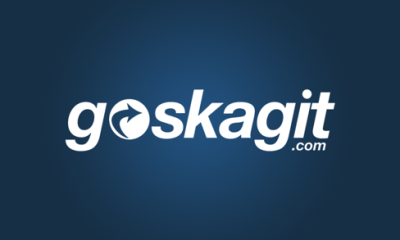

Ntekpere honored as Second Team Academic All-American | APG State News


Trump administration investigates Oregon's transgender athlete policies


Swimming & Diving Comments on the Rules – 2025-26


Amid Sports Chaos, ‘Known’ Data and Outcomes Help Agency Win


Rep. Pugh: The Red Sand Project brings awareness to ‘very serious issue’


Where to watch Chile vs. Paraguay today